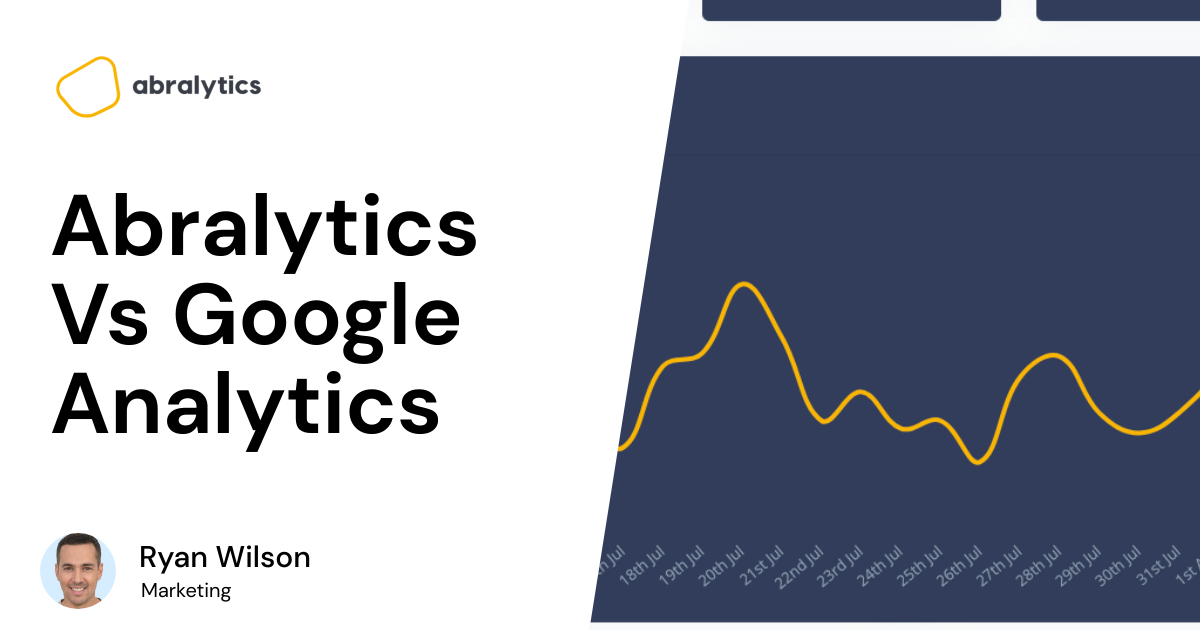Ecommerce businesses allow you to sell products online without paying for a brick-and-mortar building.
No need to worry about who will open the shop each day. Instead, your biggest concern is whether your delivery company can keep up with all the online sales you’re generating.
But having an online store isn’t all about sitting back and watching the cash roll in.
There are a few key e-commerce metrics you want to keep a close eye on, whether you use Google Analytics or any other Web Analytics tool.
What are KPIs?
KPI stands for Key Performance Indicator.
Simply put, your e-commerce KPIs are a collection of the most important metrics you track to help you grow and maintain your online store’s performance.
Q: How are they different from Metrics?
While it’s true that all metrics in an analytics report are helpful to a certain degree, the reality is that not all metrics are VITAL to the success of your e-commerce store.
For example, take the News Letter Opens Metric.
Super helpful in determining if your email campaigns are getting better click-through rates on mobile devices as opposed to desktops and tablets.
But does that metric doesn’t strike you as an e-commerce KPI that you just can’t do without?
Identifying Key Metrics
Before deciding which e-commerce metrics and KPIs are most relevant to you, you need to figure a few things out about yourself and your business.
- Set your objectives

Here are a few questions to help you identify which metrics make the list of your most valuable key performance indicators.
How far along in my sales journey am I?
All e-commerce businesses are at different stages of development. And different metrics matter at various stages of the process.
A brand new business would be more interested in New Customers than Customer Loyalty. You’ve just started, right?
So in its beginning stages, it would make way more sense to track new website traffic than how many of them have been returning. That metric becomes more relevant later on in your journey.
What would I like to achieve in the next business quarter?
Your KPIs help you set goals for your business growth. They give you real-time feedback on what’s going on in your business that will help you make the needed adjustments immediately.
Take this scenario, for example.
Your analytics report shows excellent traffic flow. Visitors to your site seem to be landing on the right pages. But you just can’t seem to interest them in a new product you’re promoting.
In response, you could change the layout of your landing page to draw attention to the specific product widget you want people to click on.
By setting that widget click as a KPI you’re able to see your site’s immediate improvement.
How many KPIs can I handle at this stage?
There are over 100 metrics available in Google Analytics. That’s a lot going on.
The sheer amount of data can overwhelm new and experienced users. So, be reasonable.
Identify and track only as many metrics as you need.
- Prioritize
In my earlier example, I spoke of how New Customers would be an essential e-commerce KPI for a start-up instead of Customer Loyalty.
And there are various other examples that show that we need to prioritize the most important metrics and KPIs according to their relevancy.
When you understand what you want to achieve with your e-commerce platform, you’ll be able to prioritize the KPIs to reflect those goals.
Top 13 E-commerce Metrics to track
There are a few metrics that are essential to not only growing but maintaining any eCommerce store.
As a bonus, we’ve also included the formula used to calculate each metric.
- Average Profit Margin
This metric takes the number one spot on our list because how much profit you make on each item you sell will go a long way to determining the strength of your e-commerce business.
It can also help you remain competitively priced in your niche. At times you might need to adjust your prices according to the going rate of products on the market.
Your Analytics platform will display profit as a percentage taken over a set period.

- Conversion Rate CR
A conversion rate refers to the percentage of users that have completed the desired action.
Conversions could also include:
- Scroll activity on a site
- Viewing a product video
- Signing up for a newsletter
- Signing up for an account
If you set a goal, such as adding a product to the checkout basket – or even better – a customer following through with a purchase, and that goal is met, then it counts as a conversion.
Your conversion rate is a great way to measure the success of your customer engagement.
If your website pages are engaging and well thought out, they should lead your customer all the way from the first landing page to purchasing a product.

- Average Order Value (AOV)
Your average order value is the average value of each e-commerce transaction in your online store.
You need to know how much revenue each order brings you because it will help you formulate marketing and pricing strategies.
For instance, let’s say that your total revenue for a month is $50,000.
You had a total of 2000 purchases completed for the same month.
This means that, on average, each customer spent $25 for the month.
From this figure, you can determine whether the time and money spent acquiring each customer to your site are worth it and adjust your marketing campaign budget accordingly.
In some cases, it’s also known as the Average Market Basket.

- Customer Lifetime Value (CLV)
A customer lifetime value refers to the total worth that a specific customer brings to a business over a set period of time.
This value begins when a customer makes their first purchase with your online store and ends when they make their last purchase. It goes without saying then that a good customer retention rate is equally important.
Because of repeat business, you can forecast or look ahead to future sales with this metric. That makes it super important when planning the growth of your e-commerce business.

- Shopping Cart Conversion Rate (CCR)
This e-commerce KPI is essential as it measures how many of your website visitors complete an order after they’ve added items to their shopping cart.
If your CCR is low, you could change your customer’s check-out experience to motivate them to follow through with their purchases.
For example, don’t bombard them with banners and sign-up forms when all they want to do is complete the transaction. Also, make sure that your shipping costs don’t scare them off.
Making minor adjustments to your shopping cart page will encourage sales and increase your conversion rate.

- Shopping Cart Abandonment Rate (CAR)
A shopping cart abandonment is an e-commerce metric that tells you how many shoppers add items to their cart, only to abandon their order before making the final payment.
There could be many different reasons why your CAR is high. Perhaps shoppers find the extra costs too high; maybe it’s because they must fill out one of those annoying sign-up forms, or the checkout process is too long.
Whatever it is, your Shopping Cart Abandonment Rate is one of the most important e-commerce KPIs you should be tracking as it tells you how many of your customers opt out of a purchase at the last minute.
Understanding this will help you make adjustments in an attempt to coax shoppers to complete their purchases.

- Customer Acquisition Cost (CAC)
With your Customer Acquisition Costs in hand, you can see how much you’ve spent to gain each of your customers.
Think about the time and money that goes into your marketing campaigns. Each new marketing strategy costs money. And you need to know if the number of customers you gain as a result is really worth it.
This metric is closely related to the CLV metric as it makes out part of the formula to calculate the value of each customer.
This metric gives you the average cost per paying customer acquisition to your business.

- Cost Per Acquisition (CPA)
Cost Per Acquisition is used to measure the financial impact of marketing campaigns.
This metric differs from your CAC metric as it gives you the cost of acquiring a non-paying customer to browse your site. Yes, even those customers matter.
More eyes perusing your pages means more brand strength.
Those customers might not be spending money on your site, but they might share what they see on social media platforms, getting your name out there.

- Repeat Purchase Rate (RPR)
This metric measures how many customers that have previously followed through with purchases return to make another transaction from your e-commerce site.
Often also referred to as your Repeat Customer Rate, Re-Order Rate, or Customer Retention rate. When your RPR goes up, your profitability also goes up as you keep existing customers happy.

- Net Profit Margin
This is one of the most critical e-commerce KPIs as it directly measures your store’s profitability.
Web hosting, delivery, and warehousing costs are rising, making it more and more challenging to make a decent net profit.
When potential Investors and financial institutions start looking for investment opportunities, they often look at a company’s Net profit margin. A high-profit margin would indicate that a business is stable, making money, and less likely to default on any loans.

- Bounce Rate
You want to keep this number as low as possible. It tells you how many users, on average, leave your e-commerce store after viewing only a single page.
Imagine having a two or three-page catalog of goods and potential customers leaving after only seeing the first page. That would tell you that something is wrong.
Keep a close eye on the bounce rate and try different things to keep people clicking through the pages. The more they browse, the higher the likelihood of conversions.

- Social Media Engagement
Knowing how people engage with your brand on social media platforms is important.
That’s because most customers these days do research on products through social media channels. Purchases are often based on how well-known a brand is in a community.
There are different ways of tracking the Social Media Engagement of your brand. You could track the followers, likes, shares, or even comments metrics.

- Customer satisfaction Score (CSAT)
This KPI is typically calculated by asking your customers a few short but important questions regarding satisfaction with your product or interaction with your website.
This might be done by including a chart upon checkout or a question like “Dear John, how likely are you to recommend our store on a scale from 0 – 10?”
This allows customers to give you a ranking or rating, usually out of ten. The higher the ranking, the better your customer satisfaction.
This score is then used to better your customer experience and retain those clients you’ve worked so hard to get in the first place.

Conclusion
We’ve just mentioned a few of the e-commerce key performance indicators that help you focus your attention where it’s needed most for the long-term success of your online business.
Some will be super valuable to you now, while others will come in handy down the line.
The trick is identifying which KPIs to track and which to leave for a later stage.
Want to find out more about Metrics? Here’s some further reading on the matter.
10 Most Important Google Analytics Metrics [2022]
Why is it important to track video engagement metrics?
Google Analytics – What Is a Metric?

![Top eCommerce Metrics to Track [2022]](https://abralytics.com/wp-content/uploads/2025/03/f488dfeeb.png)


